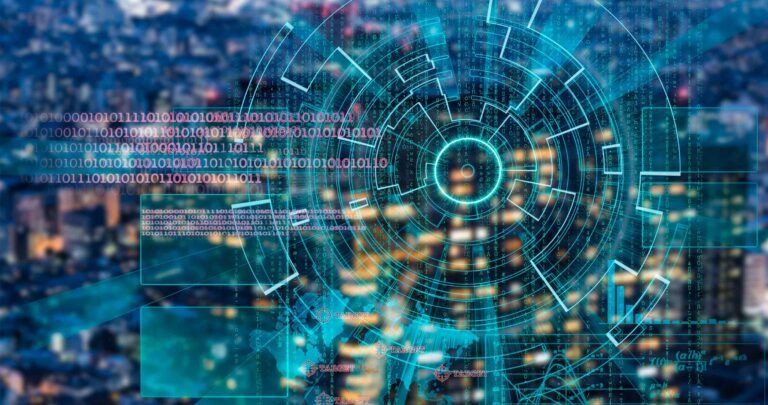Understanding Edge Computing: Revolutionizing Data Processing

Edge computing has emerged as a significant market and shows no signs of slowing down, with projected global revenue expected to soar to $274 billion by 2025, according to Statista. Simply put, it involves bringing computing power closer to the source of data generation, resulting in improved performance, reduced latency, and lower costs. For instance, smart speakers rely on their providers’ remote servers to process user requests. With edge computing, smart speakers could handle these requests directly on the device itself, enhancing efficiency and user experience. We will delve into the core of edge computing and its significance in this blog, exploring its nuances compared to cloud computing, its benefits for businesses, and its role in enabling real-time data processing.
What Does Edge Computing Mean?
Edge computing is an innovative technology that brings computation and data storage closer to the devices where data is being generated, rather than relying on a central location that can be thousands of miles away. Consequently, edge computing allows for real-time data processing without latency. It enables edge analytics to deliver faster insights and action. Additionally, it complements cloud computing by processing data at the edge of the network before sending it to the cloud. Thus, edge computing significantly reduces latency and bandwidth use.
How Does Edge Computing Differ From Cloud Computing?

The digital world is filled with technologies such as edge computing, cloud computing, and Internet of Things (IoT). All of them are important, and all play a key role in data processing and analytics. Though related, however, these concepts have distinct traits. Let’s explore the differences between edge and cloud computing. This will highlight their roles in distributed computing.
1. Location
Edge Computing
Processing and data storage occur close to the data source or device, often at the network’s edge, such as IoT devices or sensors.
Cloud Computing
Processing and data storage happen in centralized data centers, typically located at a considerable distance from the data source.
2. Latency
Edge Computing
Offers low latency because data processing occurs closer to the data source, reducing the time it takes for data to travel back and forth.
Cloud Computing
May experience higher latency due to the distance data needs to travel between the data source and the cloud data center.
3. Bandwidth Usage
Edge Computing
Minimizes bandwidth usage by processing data locally, sending only relevant information to the central cloud for storage or further analysis.
Cloud Computing
Relies heavily on network bandwidth as data is sent back and forth between the data source and the centralized cloud infrastructure.
4. Scalability
Edge Computing
Scales horizontally by adding more edge devices or nodes as needed, providing distributed processing power.
Cloud Computing
Scales vertically by increasing resources within centralized data centers, which may require significant infrastructure investments.
5. Data Privacy and Security
Edge Computing
Enhances data privacy and security by processing sensitive information locally, reducing the risk of data exposure during transit to the cloud.
Cloud Computing
Raises concerns about data privacy and security as data is transmitted and stored in centralized data centers, potentially increasing the risk of unauthorized access or breaches.
ALSO READ: What are the Technology Trends 2024 That CTOs Should Look Out for?
What are its Benefits for Businesses?

1. Enhancing Real-Time Data Processing
This technology transforms business decision-making with real-time data processing. It speeds up actions by processing data where it is generated. This is vital in fast-paced industries. Edge computing thus enables instant data analysis, giving businesses agility to quickly respond to market changes or challenges.
2. Strengthening Data Security
One of the paramount benefits of this technology lies in its ability to bolster data security. By processing sensitive information locally at the edge of the network it minimizes the risk associated with data transiting over the Internet to central data centers. This localized processing approach significantly reduces the exposure of data to potential breaches, ensuring that businesses can maintain the confidentiality and integrity of critical information, a cornerstone for trust and reliability in digital transactions.
3. Reducing Latency for Enhanced User Experiences
This technology plays a pivotal role in latency reduction, directly impacting and enhancing user experiences. By minimizing the distance data needs to travel for processing, applications deliver faster, more responsive services to end users. This reduction in latency is particularly beneficial for Internet of Things (IoT) devices and applications that require instant feedback or actions, such as autonomous vehicles, smart city infrastructures, and interactive online services, thereby driving customer satisfaction and loyalty.
4. Empowering Edge Analytics for Insightful Decision-Making
Since edge analytics provides businesses with the capability to analyze data where it is generated, this immediate insight generation helps to make informed decisions. There is no latency caused by sending data to a centralized location for analysis. Edge analytics uncover trends, patterns, and anomalies in real time, enabling businesses to optimize operations, enhance product offerings, and tailor customer experiences with precision.
5. Boosting Efficiency and Performance
Finally, edge computing applications are instrumental in driving greater efficiency and improved performance across various business operations. Edge computing removes the need for extensive data transmission, thereby conserving bandwidth and reducing operational costs. The integration of edge computing into business processes facilitates streamlined operations, energy savings, and the efficient use of resources, leading to enhanced overall performance and competitiveness in the marketplace.
ALSO READ: 5 Most Popular Cloud Computing Skills to Learn and Acquire in 2024
How Does Edge Computing Enable Real-Time Data Processing?
In edge computing, as mentioned above, data is processed and analyzed at the point of creation. This immediate processing capability is essential for applications requiring instant decision-making. This further leads to quick responses. Therefore, edge computing is indispensable for industries that rely on instantaneous data analysis.
What are Some of its Use Cases in Different Industries?
1. Real-Time Equipment Monitoring in Manufacturing
In the manufacturing sector, edge computing plays a crucial role in the real-time monitoring of equipment. This application is instrumental in predicting potential failures before they occur, thereby preventing downtime and maintaining continuous production flow. By processing data onsite, edge computing applications facilitate immediate analysis and response, ensuring machinery operates at peak efficiency. This not only enhances productivity but also significantly reduces maintenance costs, showcasing its pivotal role in modern manufacturing environments.
2. Enhancing Patient Care Through Remote Monitoring in Health Care
Edge computing has transformed health care by enabling remote patient monitoring, a feature particularly beneficial in areas with limited access to medical facilities. By analyzing patient data in real time, health care providers can make timely decisions, improve patient outcomes, and offer personalized care plans. This approach not only improves the quality of care but also ensures data security, as sensitive patient information is processed locally, minimizing the risk of breaches.
3. Personalizing Retail Experiences With Edge Analytics
In the retail industry, this technology leverages edge analytics to personalize customer shopping experiences. Real-time data processing allows retailers to offer personalized recommendations, optimize inventory management, and streamline operations. This not only enhances customer satisfaction but also boosts sales, illustrating the transformative potential of edge computing in retail.
4. Optimizing Operations in the Logistics and Transportation Sector
Its applications in logistics and transportation enable real-time tracking and management of vehicles and cargo, facilitating efficient route planning and timely deliveries. This reduces operational costs and enhances customer satisfaction through improved service delivery. Additionally, the ability to process and analyze data on the move ensures latency reduction and boosts operational efficiency.
5. Revolutionizing Smart Cities With IoT and Edge Computing
Smart cities benefit immensely from the integration of the Internet of Things (IoT) and edge computing. These technologies work together to manage infrastructure, traffic, energy consumption, and public safety in an efficient and automated manner. By processing data locally, smart city applications can respond to changes in real time, improving urban living conditions and sustainability.
ALSO READ: A Complete Guide to the Pros and Cons of Cloud Computing
Edge computing is a powerful technology that offers significant advantages across numerous industries. Moreover, understanding edge computing and its applications can empower professionals to innovate and improve operational efficiencies. To know more about this future-forward technology, sign up for Emeritus’ technology courses to deepen their understanding. After all, its knowledge can lead to transformative changes in how businesses operate and deliver value to their customers.
Write to us at content@emeritus.org






